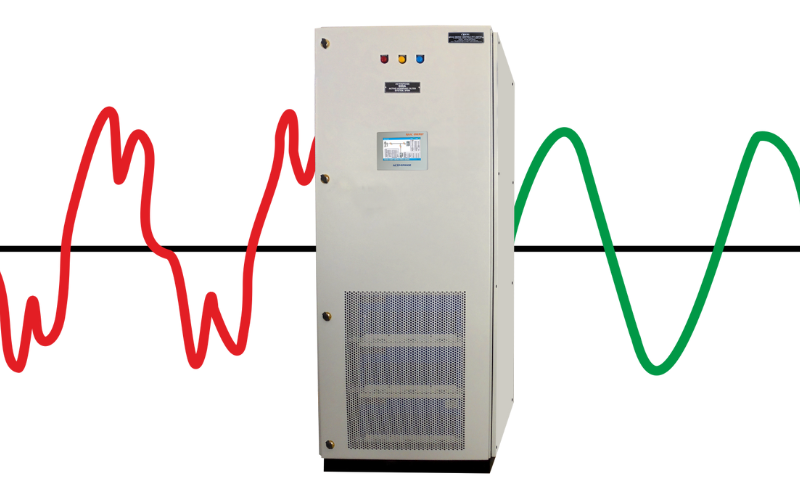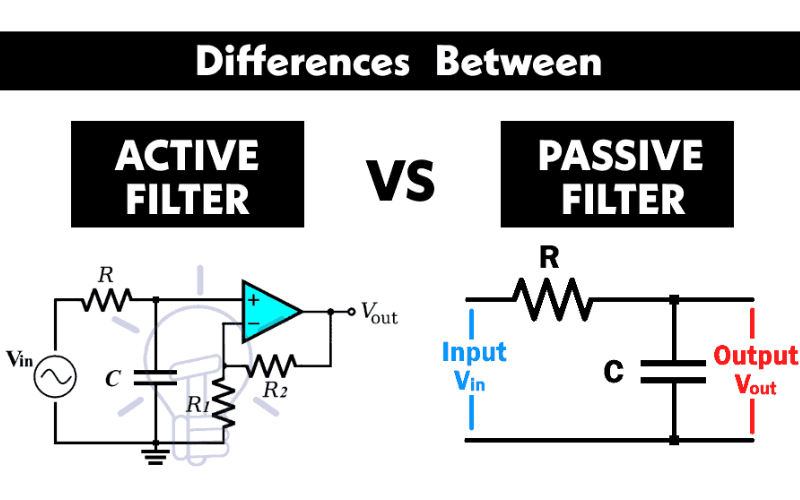In the world of electrical engineering, maintaining power quality is paramount. One of the challenges we often face is harmonics, those pesky distortions in the electrical waveform that can wreak havoc on our systems.
To combat this issue, engineers have developed various methods and technologies, and one of the most advanced solutions is the Active Harmonic Filter.
In this blog post, we’ll dive into the fascinating world of active harmonic filters, exploring their working principles, advantages, applications, and how they differ from passive harmonic filters.
What is an Active Harmonic Filter?
Before we delve into the intricacies, let’s define what an active harmonic filter is. In simple terms, an active harmonic filter is a device designed to mitigate harmonic distortions in an electrical system.
These distortions, caused by nonlinear loads such as variable frequency drives, computers, and LED lighting, can lead to voltage fluctuations, increased losses, and overheating of equipment.
Active harmonic filters are the superheroes of the power quality world, swooping in to save the day by detecting and neutralising these harmonics in real time.
Active Harmonic Filter Working Principle
Active harmonic filters are controlled by a closed-loop, real-time system that keeps an eye on the electrical grid constantly. This is how they wield their power:
1. Current and Voltage Measurement: The active harmonic filter first measures the current and voltage at the point of connection to the grid. This data is critical for determining the harmonic content and power factor of the load.
2. Harmonic Detection: The filter analyses the data to identify the specific harmonic frequencies present in the system. This is crucial because different harmonics require different corrective actions.
3. Generation of Counteractive Harmonics: Once the harmonics are identified, the active harmonic filter generates counteractive harmonic currents, precisely out of phase with the offending harmonics. These counteractive currents effectively cancel out the unwanted distortions, restoring the waveform to its ideal sinusoidal shape.
4. Real-Time Correction: This process is continuous, adjusting to changing loads and harmonics in real time. The active harmonic filter acts as a smart guardian, adapting to the evolving needs of the electrical system.
5. Improved Power Factor: Apart from harmonics, active harmonic filters also help in improving the power factor, ensuring efficient use of electrical energy and reducing penalties imposed by utilities for low power factor.
Active Harmonic Filter Advantages
Active harmonic filters offer a plethora of advantages that make them a preferred choice in many applications:
1. Precise Harmonic Mitigation: Being based on a closed-loop control mechanism, active harmonic filters are extremely precise in removing harmonics. This precision ensures that the power quality remains consistently high.
2. Real-Time Correction: Active harmonic filters are more effective and efficient than passive filters because they can rapidly adjust to changes in the electrical network.
3. Improved Power Factor: These filters help improve power factor, which reduces the strain on the power distribution system, leading to energy savings and lower utility bills.
4. Reduced Equipment Stress: By eliminating harmonics and voltage distortions, active harmonic filters extend the lifespan of sensitive equipment, reducing maintenance costs.
5. Cost Savings: Although active harmonic filters come with a higher initial cost, the long-term benefits, including reduced downtime, energy savings, and equipment longevity, make them a cost-effective solution.
6. Compliance: They help facilities comply with international power quality standards and regulations, ensuring a consistent and reliable power supply.

Application of Active Harmonic Filters
Active harmonic filters find a wide range of applications across various industries where power quality is critical. Some common applications include
1. Industrial Facilities: Manufacturing plants, especially those with variable speed drives and other nonlinear loads, benefit significantly from active harmonic filters. They ensure the reliability of machinery, reduce maintenance costs, and improve overall system efficiency.
2. Data Centres: Data centres rely on an uninterrupted power supply. Active harmonic filters play a crucial role in maintaining power quality, reducing the risk of data loss, and ensuring the longevity of IT equipment.
3. Commercial Buildings: In office complexes, retail spaces, and hospitals, active harmonic filters help maintain a stable power supply, ensuring that HVAC systems, elevators, and sensitive medical equipment operate smoothly.
4. Renewable Energy Installations: Wind and solar farms can generate harmonics due to the variability of their power output. Active harmonic filters are used to ensure the clean injection of power into the grid, preventing disturbances and ensuring grid stability.
5. Wastewater Treatment Plants: In these facilities, pumps, blowers, and various process equipment introduce harmonics. Active harmonic filters help in maintaining efficient operation and reducing energy consumption.
What is the Difference Between Active and Passive Harmonic Filters?

To appreciate the role of active harmonic filters fully, it’s essential to understand how they differ from passive harmonic filters:
1. Real-time vs. Static: Active filters continuously monitor and adapt to the electrical system’s changing needs in real-time, whereas passive filters, such as shunt capacitors or inductors, provide a fixed level of correction.
2. Flexibility: Able to reduce a broad spectrum of harmonic frequencies, active filters are incredibly adaptable. On the other hand, passive filters might not work in every circumstance because they are intended for particular harmonic frequencies.
3. Dimensions and Weight: In comparison to their passive counterparts, active filters are typically smaller and lighter. They are therefore more useful in scenarios when there is a shortage of space.
4. Initial Cost vs. Long-Term Benefits: In general, active harmonic filters are more expensive initially than passive filters. But in many cases, the long-term advantages—such as energy savings and equipment protection—outweigh the upfront costs.
5. Maintenance: While active filters require regular inspections and upgrades to guarantee optimal operation, passive filters do not require continuous maintenance.
6. Overload Handling: Active filters can handle temporary overloads better due to their real-time control, making them more robust in dynamic electrical environments.
Conclusion
When it comes to power quality, active harmonic filters are revolutionary. Their adaptable, real-time method of reducing harmonics and raising power factors makes them an essential tool for a variety of sectors.
The long-term advantages, such as less downtime, energy savings, and longer equipment life, make them a wise investment even though they could have a greater initial cost.
Active harmonic filters work as dependable protectors in a world where electrical systems are growing more intricate, guaranteeing that the power we depend on is clean, steady, and effective.
With their applications spanning from industrial facilities to data centres and renewable energy installations, the importance of active harmonic filters in our modern world cannot be overstated.
As we continue to demand more from our electrical systems, these devices will play an even more significant role in shaping the future of power quality and energy efficiency.

